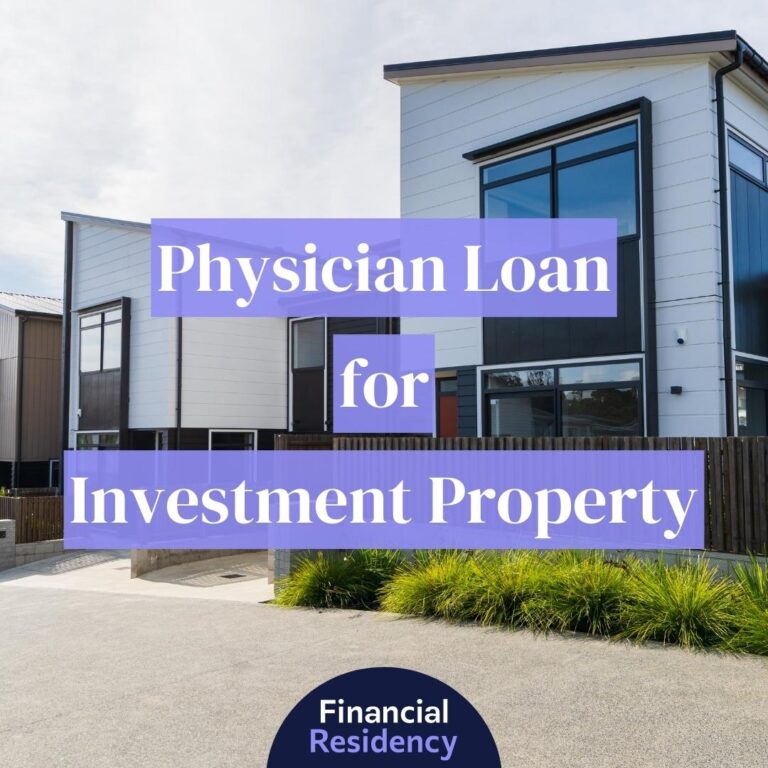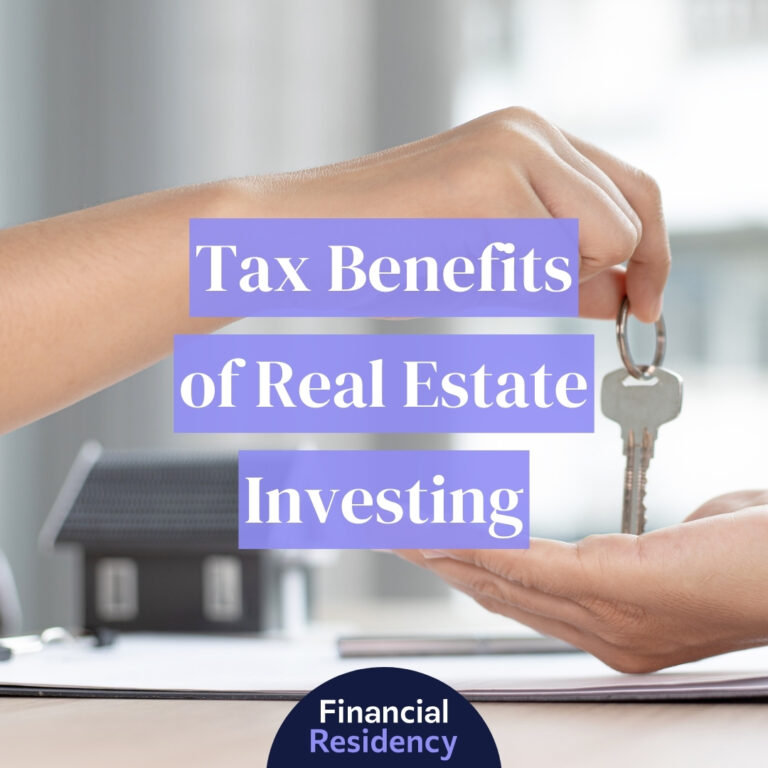Real estate syndications offer the ability for you to invest your capital, together with other investors, to fund the purchase of commercial real estate and earn passive income.
But what kind of real estate syndication is the right one for you to add to your portfolio? Let’s learn about the types of commercial real estate that syndications invest in so you can make an intelligent choice as an investor and put your money to work.
Types of Real Estate Syndications
Each type of commercial real estate comes with its own set of challenges and rewards. A basic understanding of the commercial real estate sectors will enhance your investment experience and help you find the right real estate syndication to add to your portfolio.
MultiFamily
Any residential real estate outside of single-family homes falls under the umbrella of multi-family real estate. Real estate syndications investing in multifamily cover a wide range of sizes, from five-unit homes, all the way up to 10+ story high-rise apartments. Multifamily syndications run the gamut from smaller value add complexes in Tier 3 cities to large urban luxury complexes with amenities like pools and high-end gyms.
According to Freddie Mac, multifamily apartments can be classified into six different categories.
- High-Rise: A building with nine or more floors with at least one elevator.
- Mid-Rise: A multi-story building with an elevator, usually located in an urban area.
- Garden Style: One, two, or three-story apartment building built in a garden-like setting in a suburban, rural or urban location. These may or may not have elevators.
- Walk-Up: A four to six-story building without an elevator.
- Manufactured Housing Community: A community in which the operator leases ground sites to owners of manufactured homes.
- Special Purpose Housing: A multi-family property of any style that targets a particular population segment including student housing, senior housing, and subsidized low income or special needs housing.
No matter the type you decide to invest in, a multifamily real estate syndication can generate a large amount of cash flow from rents. Forced appreciation through renovations, increasing rents or reducing costs are other techniques that sponsors in a multifamily real estate syndication can use to earn more money.
Note: Four-unit homes and under are also considered multifamily investments, but are not classified as commercial real estate. This means that financing is often cheaper and easier and it could be a great place to get your feet wet on your own and see what comes with multifamily investing if you want to invest outside of a real estate syndication.
Office
Another common type of real estate syndication is office space. Commercial office space comes in a variety of forms, from one story former homes that have been converted to office space to skyscrapers. Some are single-tenanted spaces, and some are multi-tenanted. They are typically classified by height, location, and use. According to NAIOP, one of the largest commercial real estate organizations in the country, there are three height categories.
- Low-Rise: less than 7 stories
- Mid-Rise: 7-25 stories
- High-Rise: 25+ stories
The type of tenants a building attracts can sometimes depend on the buildings’ height. Some tenants might want to impress high-end clients or talent with a gorgeous view and premium finishes. Others might be a group who prefer to bike to work, and the ability to store a bike without walking up 15 flights of stairs might be the most important factor. These different types of buildings will vary in materials used to build, cost to construct, and maintenance issues (especially considering the age of the building).
The next step in classification has two types:
Central Business District (“CBD”): you will find every type of height here, and a varying range of rent.
Suburban: often cheaper in rents, however, you likely won’t find the steel and glass high-rise in a suburban neighborhood. These are usually smaller and can often be found grouped in office “parks”.
Lastly, they are categorized by use.
- General Office Use: The most common type, favorited by established tech companies and other professional services. They typically don’t have specialized tenant improvements.
- Medical Offices: Include doctors’ offices, hospital specialists, and others in the medical profession. These buildings might have significant tenant improvements to accommodate specialized equipment and hazards.
- Tech/Flex: some space in an office building can be used for heavier, more industrial or technological uses.
According to NAIOP, at least 75% of the interior space of the building needs to be designed and finished as office space in order to qualify as an office building.
The Building Owners and Managers Association International (BOMA) also classes them into three tiers.
- Class A: these are the high-end buildings competing for premier office users with rents above average for the area. These buildings have high-quality standard finishes, state-of-the-art systems, exceptional accessibility, and a definite market presence.
- Class B: these buildings compete for a wide range of users with rents in the average range. The building finishes are fair to good for the area, and systems are adequate, but the building does not compete with Class A at the same price.
- Class C: these buildings compete for tenants requiring functional space at rents that are below average for the area.
When the economy is doing well, the rents can be fantastic, and holding a real estate syndication that invests in an office building can be lucrative.
Senior Housing
The aging baby boomer population is attracting more investors into this type of real estate syndication. According to the National Investment Center for the Seniors Housing and Care Industry, or NIC, there are four different categories for seniors housing facilities.
- Independent Living: these buildings are designed for seniors who require little to no assistance. These properties can cater to residents who are 55+ with a variety of on-site amenities and social programming for active seniors.
- Assisted Living: these licensed facilities combine housing with a variety of personal support services, such as transportation, meals, laundry, and health-care assistance.
- Nursing Homes: also licensed, and provide 24-hour skilled care for chronic and short-term conditions that require medical and nursing care.
- Memory-Care: these long-term care facilities are designed for people with a level of impairment, such as dementia, that makes it unsafe for them to continue to live at home, but who do not require the intensive care of a skilled nursing facility.
Self-Storage
While they come in many different sizes and can have specialized purposes, self-storage is essentially just another type of commercial real estate, with self-contained units used as a storage solution. They have come a long way over the last decade. The rural and suburban gravel properties with roll-up metal doors are being replaced with modern facilities and state-of-the-art operations. Demand has inspired developers to create multi-story, urban-centered properties that include features such as climate and humidity-controlled spaces and high-tech security systems. Not only do they provide the typical storage to individuals and businesses, but some facilities also offer specialized storage for boats, RVs, classic cars, wine, and documents.
Self-storage is a very low-key type of investment. It is not labor-intensive and there is far less maintenance required than in multifamily or office space. Evictions are easy if needed because you are not dealing with a dwelling people are living in. There’s good cash flow and the ability for forced appreciation through upgrades and lowering operating costs. Some experts claim that self-storage is economy proof, since people hate to through anything out, even when times are hard.
If, however, the neighborhood happens to decrease in value, a storage facility may become less desirable. In this type of real estate syndication, location is extremely important. It can also take time to occupy all the units if the vacancy rate if high initially.
Retail
Real estate syndications that invest in retail range from single-tenant locations (think “big box” retailers like Walmart) to large mega-malls. These are almost exclusively three stories or less, though sometimes the ground level of high-rise buildings are used for retail purposes. Retail centers that have more than one tenant are grouped by size and tenant type, according to The International Council of Shopping Centers (ICSC). They also typically feature an “anchor”, or lead tenant, that drives shoppers to the property.
- Malls: Regional malls can range in size from about 400,000 to 800,000 square feet. They include inline retail, service and restaurant tenants, as well as major department store anchors, such as Macy’s and Nordstrom. Super regional malls are closer to the 800,000 square foot end.
- Community and Neighborhood Center: These include a mix of merchandise and convenience-oriented tenants. More often than not, community centers are anchored by big-box stores like Target, Walmart or grocery stores. They range in size from 30,000 to 400,000 square feet.
- Strip Centers: Named for their straight shapes, these properties typically focus on convenience tenants such as dry cleaners, nail salons, and coffee shops. They are usually smaller than 30,000 square feet.
- Power Centers: These are a type of strip center typically made up of big-box retailers such as Best Buy, and Bed, Bath & Beyond, with only a few small tenants.
- Lifestyle Centers: As enclosed malls skyrocketed in price, developers created a new type of open-air “lifestyle center.” These include upscale apparel and other retailers, along with dining and entertainment. Think Mall of America as opposed to the traditional mall.
One of the most important and interesting aspects of the retail syndication subtype is its dependency on traffic and parking. Urban retail spaces rely heavily on foot traffic, so a real estate syndication in a retail property on a bustling city block is more likely to be a successful project. Strip centers rely on vehicle traffic and are often located close to major intersections or close to highway exits. Lifestyle centers will draw in their own traffic because their anchors are usually movie theaters and restaurants. They tend not to rely on location as much as the guest experience. With the exception of very dense urban areas, almost all retail tenants will require certain minimum parking to square foot ratio to lease a space, so this should be addressed in any retail deal.
Another important feature for retail is the tenant mix. Also called adjacencies, retail tenants benefit from having niche-specific neighbors and not being situated beside competitors. For example, you would likely never see Target and Walmart right next to each other.
The rent in real estate syndications that invest in retail tends to be stable, as most tenants sign 5 to 20-year leases.
Developing or renovating a retail site is capital intensive, though, requiring a lot of cash to get going. If a major tenant leaves, it can take up a significant chunk 30% out of the syndication’s income.
Industrial
Industrial buildings have three main categories, defined by the National Association of Industrial & Office Parks (NAIOP).
- Manufacturing: this is a facility used for the conversion, fabrication, and/or assembly of raw or partly wrought materials into products/goods. They typically have less than 20% office space and can be further classified into heavy or light industrial use.
- Warehouse: these are primarily used for the storage and/or distribution of materials, goods, and merchandise. They tend to have less than 15% office space and the more modern facilities likely have high clear ceiling heights that allow for more cubic storage space. This subtype also includes special facilities such as cold or freezer storage for food.
- Flex/R&D: These are designed specifically to give its tenants flexibility in the use of the space. Sometimes referred to as flex/tech space, these buildings are an office-industrial mix that can have 30%, and up to 100%, office finish.
- They require a lot of acreage for their square footage, low-density parking and truck turning, meaning they are almost never found in the Central Business District. Thus it’s not often you hear them distinguished by anything other than use, and they are typically located along major transportation routes. Research and Development (R&D) is a specialized subtype of the industrial sector and can include specialized tenant improvements.
Industrial investments tend to have a lower tenant turn-over rate but are much harder to fill. Over the past few years, industrial has been less popular in the real estate syndication world as multifamily residential and self-storage have been earning high returns for investors, but industrial real estate syndications should not be overlooked by investors.
Hotel
While hotels are distinguished by the “flag”, or operating brand (like Holiday Inn, or Hilton), these types of investments are defined foremost by the services and amenities they offer. Real Capital Analytics separates them into several categories.
- Full Service: These hotels are packed with guest services and amenities, such as on-site restaurants, banquet and meeting rooms, concierge services, room service, spas, and retail shops. The overall success of these types of hotels is very dependent upon the quality of its on-site amenities, especially the food and beverage services.
- Limited-Service: These properties are a step down in service and amenities. They include meeting rooms, a fitness center, and a swimming pool, but do not have room service, concierge, or on-site restaurants. The success of these hotels are more predictable than full-service hotels.
- Budget: Think no-frills, maybe one or two guest services or amenities, but these tend to focus on providing the bare essentials for a low rate.
- Boutique: You will usually find these hotels located in an urban or resort location. They have full-service amenities, and are not part of a national chain. Often they have fewer rooms and are focused on unique characteristics.
- Casino: These have a gaming component, such as video poker or slot machines. Extended-stay – While these hotels have limited service, the include fully equipped kitchens in guest rooms and larger rooms for longer stays.
- Resort: These deluxe hotels are full-service, and have a large amount of land in a typical resort location. They have amenities such as an attached golf course, water park or amusement facility.
Real estate syndications in a hotel can be a great investment. Hotels do require quite a bit of cash when it comes to upkeep. Aesthetic needs to be kept up, rooms restocked and cleaned, and all of this needs to be considered as an expense in your investment. But a smart sponsor in a real estate syndication with experience in this niche can generate plenty of passive income for investors.
Mobile Home Parks
Real estate syndications in mobile home parks have been very hot over the last few years so it’s worth taking the time to learn about this much-maligned form of real estate investment. There are two scenarios when it comes to mobile home park real estate syndications: either you own the mobile home park and have tenants bring the home, or you own both the park and the homes and rent out both. Ultimately, it is better to own only the park and not the homes, as this shift most maintenance and expenses to the tenants.
Mobile home parks produce strong cash flow, and the demand for affordable housing is growing. You likely won’t see many new mobile home parks being built, so there is less competition, making it unlikely the investors in a mobile home real estate syndication need to worry about another park opening up next door. The tenants here tend to stay in the parks for a very long time, making for a low turn-over rate. Another plus is that many mobile home parks are seller-financed, allowing the investors in a mobile home park syndication to enjoy favorable financing.




